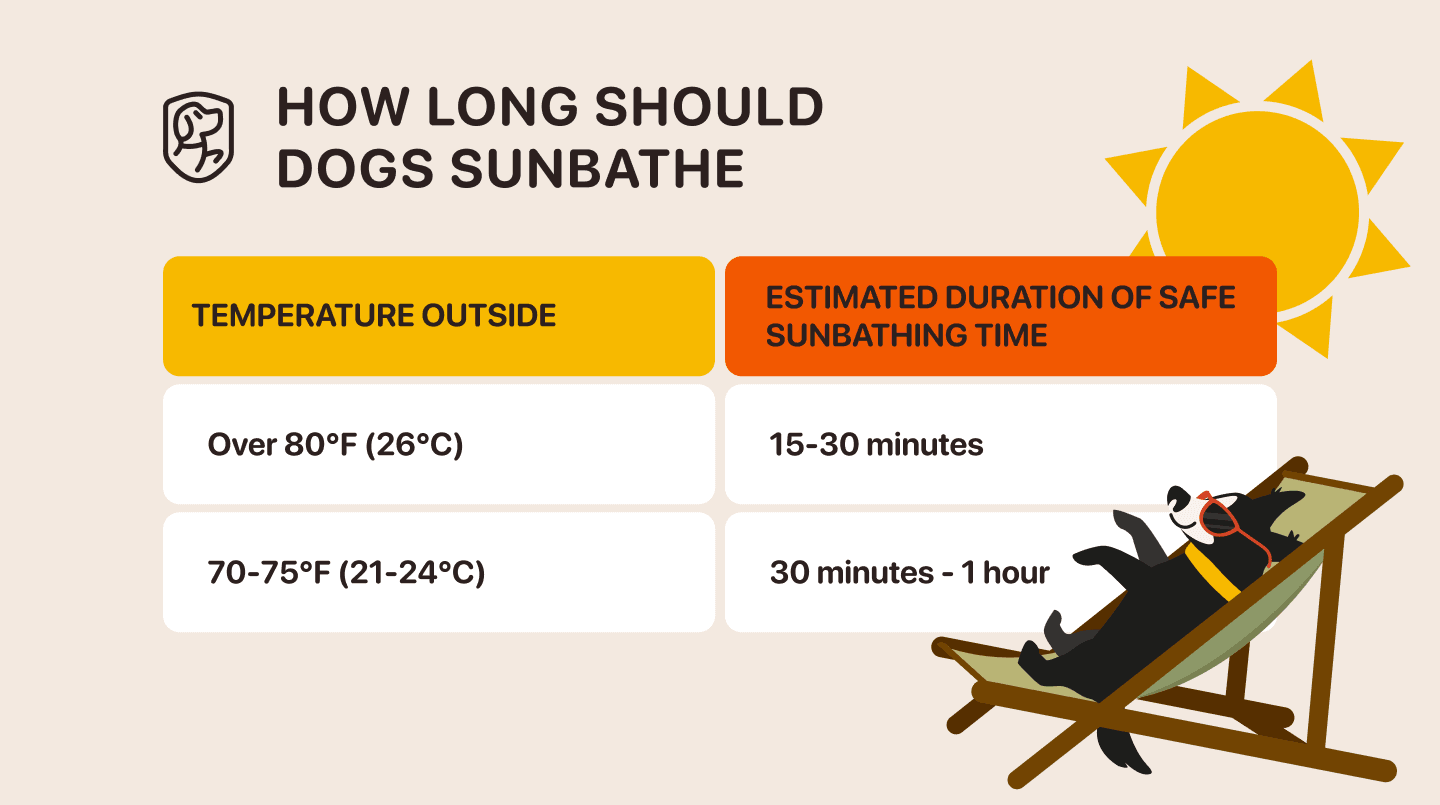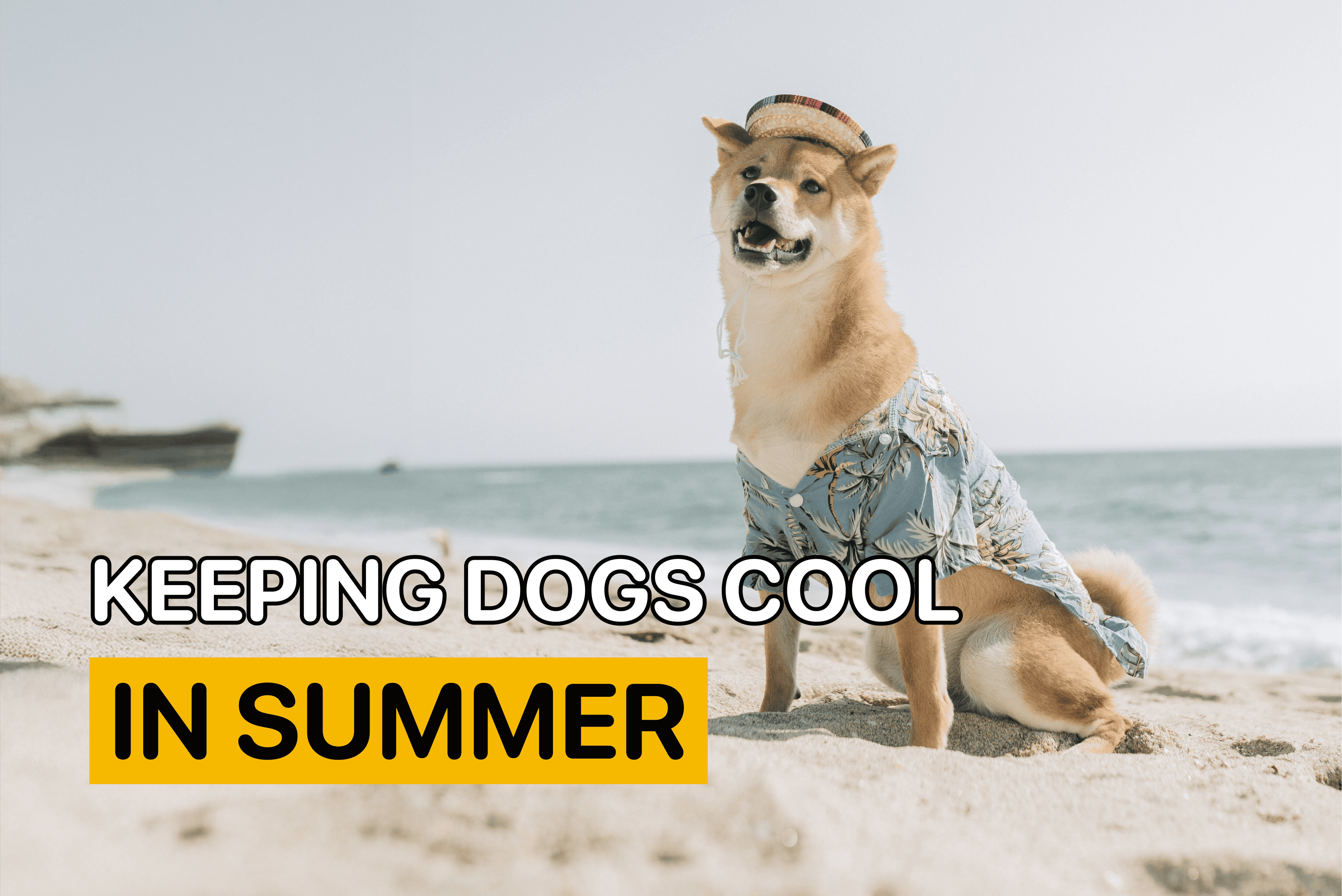Why Do Dogs Like to Sunbathe? (And Should You Allow Them To?)

By
Woofz Team Updated on |Reviewed by
Karen PiwinskiIt’s a warm sunny day, and your dog decides to lie down outside to absorb sunlight and enjoy themselves. Seeing your pet sunbathing is delightful for pet owners. But you may ask yourself: how safe is it for a dog to expose themselves to the sun's rays? Is sunbathing good for dogs?
Let’s dive deeper into the topic and explore all the benefits, hidden dangers, and precautions you must take to make sunny days safe for your furry companion.
Why Do Dogs Like to Sunbathe?
Canines like spending time in the sun for numerous reasons. Just like for humans, sun exposure helps them feel better and provides an excellent opportunity for relaxation.
Some dogs like it more than others, so it's important to give your dog the choice to be in the sun or shade or inside.

Most common reasons why dogs sunbathe include:
-
It helps them feel warmer, more comfortable, and relaxed
-
It regulates their sleep cycle and brings their circadian rhythm back to normal, improving sleep patterns
-
Natural sunlight facilitates the release of the “happiness hormone” serotonin
-
Older canines can benefit from exposure to warmth and sunlight, as it reduces joint pain and muscle tension
-
Sunlight can help regulate body temperature naturally and warm up a dog when it’s cold
-
Sunbathing partially stems from instinctive behavior your pet adopted from their ancestors
-
It contributes to the production of vitamin D in the body.
Do not to supplement vitamin D for dogs – with humans it can help, but dogs need careful oversight from a veterinarian.
Is Sunbathing Good for Dogs?
Though the benefits of sunbathing are many, this activity isn’t something you should allow your dog to indulge in excessively. A moderate approach and limiting sunbathing time are crucial for keeping your pup safe. Let’s discuss in more detail some of the risks natural sunlight can bring.

Skin cancer
Despite being covered with fur, a dog’s skin is susceptible to cancer. Contributing factors are a white, a thin coat, and excessive sun exposure, especially of less covered areas (like the belly or the face). UV rays can affect skin cells, causing them to transform into cancerous ones.
Heatstroke and dehydration
Dogs regulate their body temperature through panting, which enables them to dissipate heat but also causes them to lose their inner water resources. As a result, when a dog is overheated, dehydration is likely. Direct sunlight is a contributing factor to body temperature increase.

Another danger of overheating is heatstroke. This condition can be fatal if not managed correctly. That’s why avoiding direct sunlight in hot weather is essential.
Premature aging
While lying in the sun can be comfortable and relaxing for your pet, you must remember that UV rays can harm their skin. Prolonged exposure to sunlight can cause your dog’s skin to age faster. Using a pet-friendly sunscreen can help avoid the detrimental effects of too much sun on skin cells.
Can Dogs Get Sunburnt?
Although it may seem that dogs are immune to sunburns due to their fur, this is a dangerous misconception. Canines can, and they do, get sunburnt under certain conditions. Fur doesn’t block UV rays entirely, and if a pet is exposed to too much sun for a long time, skin damage is more likely.

Body parts susceptible to sunburn:
- Nose
- Groin
- Belly
- Ear tips
- Lips
- Any shaved areas.
Breeds that have light or thin coats are also at increased risk of sunburn. In addition, if you notice your pet has bald spots on their skin, ensure these sensitive areas are well-protected.
How Long Should I Let My Dog Lay in the Sun?
It’s impossible to give a definite answer to how much time your dog can stay in direct sunlight. It depends on factors such as outdoor temperature, your pet’s age, and health status (puppies and senior dogs are more vulnerable to overheating), their breed, and coat type.
You must also beware of signs of overheating, such as panting, excessive drooling, a bright red tongue and gums, disorientation, or stumbling, and move your dog to a shaded area if you suspect your pup is too hot.

On hot days, we suggest keeping your dog in a place with shade and fresh water during midday heat hours (10 am–4 pm).

If you decide to let your dog sunbathe, ensure they:
- Always have access to clean drinking water
- Can freely move to a shaded area to avoid sunlight
- Have their sensitive body parts covered with sunscreen
- Stay away from hot surfaces, like asphalt or concrete.
Choose the right sunscreen for a dog in the sun
When selecting a sunscreen for your furry friend, you must follow specific guidelines to ensure safety. First of all, never use products designed for humans as they have a different formula and can cause skin issues when used for canines.

According to AKC Guidelines, the SPF you use for your dog must:
- Be free from zinc oxide or para-aminobenzoic acid
- Be water-resistant
- Be scent-free
- Offer the SPF number 30.
Apply the sunscreen 20 minutes before your dog steps into the sunlight, and reapply it every 4–6 hours.
Wrap Up
Sunbathing is perfectly normal for dogs, and it brings numerous benefits for their physical and mental well-being. However, they should only be allowed to sunbathe in moderation since sunburn and other health complications are possible. Remember to apply sunscreen, provide enough water, and limit sun exposure. Follow these simple rules, and sunny days will bring your pet nothing but pleasure!



